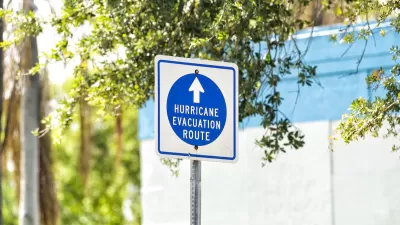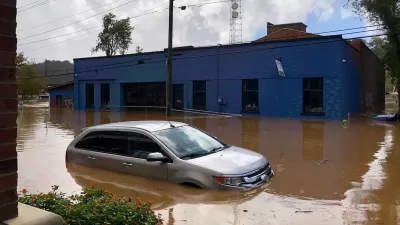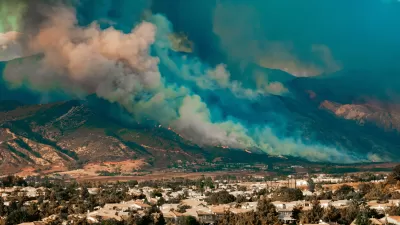Black Americans are flocking to southern states, but many popular destinations face growing threats from extreme weather.

An article for Capital B and republished in Inside Climate News by Adam Mahoney draws attention to a growing conundrum: as more Black Americans move to the South in search of affordability and good weather, they are increasingly at risk from climate disasters like hurricanes and wildfires. “Over the past decade, Texas and Florida, two states known for hurricanes and extreme heat waves – but mild winters – have seen the most new residents as roughly a third of relocating Americans say ‘better weather’ is the reason for their moves.”
As Mahoney explains, 94 percent of the nation’s Black population growth since 2020 has occurred in the South. Meanwhile, “The country’s most climate vulnerable counties are concentrated in the Southeast, according to the most comprehensive climate risk data available.” Since 2016, more than half of major weather-related power outages happened in Southern states.
“For Black folks, this presents a unique set of considerations — and challenges. It seems that in the attempt to escape the environmental racism and the poor health outcomes of the North and Midwest, Black people are essentially moving toward the epicenter of climate disasters, says Rhiana Gunn-Wright, the director of climate policy at the Roosevelt Institute.” According to research, Black Americans experience disparate outcomes from their white counterparts during disasters and recovery. “Even when Black residents receive recovery aid, white people who receive the same amount of federal assistance see their wealth rise, while Black residents see their wealth decline following disaster, a study by Rice University found.”
FULL STORY: Moving South, Black Americans Are Weathering Climate Change

Rethinking Redlining
For decades we have blamed 100-year-old maps for the patterns of spatial racial inequity that persist in American cities today. An esteemed researcher says: we’ve got it all wrong.

Montreal Mall to Become 6,000 Housing Units
Place Versailles will be transformed into a mixed-use complex over the next 25 years.

Planetizen Federal Action Tracker
A weekly monitor of how Trump’s orders and actions are impacting planners and planning in America.

Santa Clara County Dedicates Over $28M to Affordable Housing
The county is funding over 600 new affordable housing units via revenue from a 2016 bond measure.

Why a Failed ‘Smart City’ Is Still Relevant
A Google-backed proposal to turn an underused section of Toronto waterfront into a tech hub holds relevant lessons about privacy and data.

When Sears Pioneered Modular Housing
Kit homes sold in catalogs like Sears and Montgomery Ward made homeownership affordable for midcentury Americans.
Urban Design for Planners 1: Software Tools
This six-course series explores essential urban design concepts using open source software and equips planners with the tools they need to participate fully in the urban design process.
Planning for Universal Design
Learn the tools for implementing Universal Design in planning regulations.
City of Camden Redevelopment Agency
City of Astoria
Transportation Research & Education Center (TREC) at Portland State University
Regional Transportation Commission of Southern Nevada
Toledo-Lucas County Plan Commissions





























